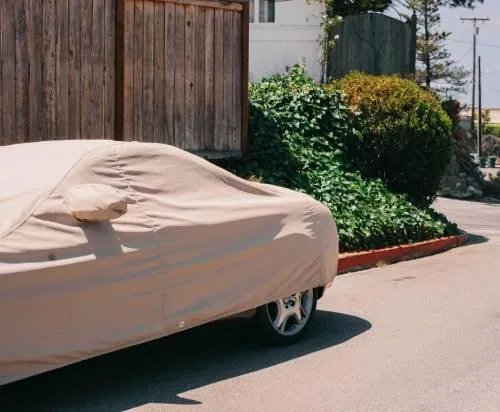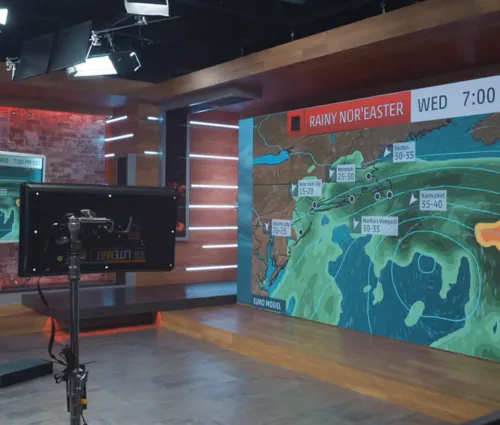Smart hail protection tips for vehicles
Prepare Your Car Now for Approaching Hail Season

FSDAVCFEBFEVSDDVFSD

FSDAVCFEBFEVSDDVFSD

FSDAVCFEBFEVSDDVFSD
Why Planning Starts Well Before the First Storms

Missouri thunderstorm season churns out hail from March through July, and every spring we meet drivers surprised by the cost of roof-dimple repairs. A little planning now can spare cracked glass and dented hoods later. This first section outlines why the Show-Me State’s unpredictable weather makes preparation smart, not optional for anyone who depends on their vehicle daily, year after year of commutes and errands.
We will cover forecast tools, sturdy parking solutions, insurance fine print, and the value of a quick professional inspection before storm clouds gather. By applying each tip, you can minimize repair costs and downtime, maintain factory paint warranties, and reduce anxiety when warnings sound on your phone. Think of this guide as a practical checklist to keep cabin, wallet, and schedule intact throughout hail season.

Understanding Missouri’s Common Hail Patterns and Seasonal Risks
Understand the pattern first. Missouri sits where warm Gulf moisture collides with cool Canadian air, creating towers of storm clouds that hurl ice stones larger than quarters. National Weather Service data shows the worst hail strikes between late April and early June, with a smaller revival in September when powerful northwest flow frequently passes overhead again statewide, relentlessly.
Severe storms typically form in the afternoon when surface heating peaks, but nocturnal hail events do occur. Because warnings can pop with minutes of notice, rely on multiple alert sources: local TV apps, NOAA Weather Radio, and text updates from insurance carriers. Signing up now saves crucial seconds later, giving you time to move your vehicle under cover before the first stones fall.
Keep an eye on Storm Prediction Center outlooks, especially when they issue a yellow or orange risk zone across central Missouri. Those maps flag hail sizes up to two inches. Planning errands around the forecast may sound inconvenient, yet one avoided hailstorm prevents thousands in repairs and keeps your family schedule running on time.

Secure parking options and durable vehicle protective covers
Covered parking remains the most reliable shield against hail. If you have a garage, clear out clutter now so the space is available when forecasts turn threatening. Apartment dwellers should explore nearby garages, university decks, or paid park-and-ride structures that allow overnight stays during active watches.
When a roof is not an option, invest in a portable car cover designed specifically for hail. Look for multi-layer designs with inflatable air pockets or thick foam panels. Practice deploying the cover before storm season so installation takes less than five minutes.

Avoid parking beneath large trees or metal awnings with rusted bolts, as falling limbs or collapsing roofs can compound damage. If you must leave a car outside at work, choose the lee side of a sturdy building so the structure absorbs the brunt of wind-driven stones. A few extra steps beat extensive body shop downtime later.
Auto insurance provides the financial backstop for hail, yet many drivers learn too late that their comprehensive deductible jumped at renewal. Review your policy before clouds gather. If you can’t comfortably afford the current deductible, discuss lower options or glass-only endorsements that waive it for windshield replacement. Adjustments made mid-term often cost just a few extra dollars.
Verify that your insurer allows direct billing with certified PDR shops. Some carriers force owners to pay first and wait weeks for reimbursement, draining cash reserves. Store claim phone numbers, policy documents, and a photo checklist in a zippered glove-box pouch. Quick access lets you file immediately, cut rental days, and refuse pressure to repaint healthy panels. Because Dentex Midwest uploads estimates directly to every major carrier, confirming that connection now accelerates approvals, keeps reimbursements predictable, and guards your budget during storm recovery. Review details each spring alongside tire checks and emergency updates.
Review insurance policies and understand each claim step
Early inspection reduces surprises. Schedule a quick walk-around with a trusted technician at least once a year before storm season peaks.They will note tiny chips, aging wiper blades, or brittle trim that could crack under hail impact. Photographing the car in good light establishes solid pre-storm condition, clearly streamlining any later insurance dispute about when dents appeared.
During the visit, ask the shop to assess roof seams and panel alignment. Gaps or loose moldings can let water inside if hail breaks paint, leading to hidden mildew. Technicians can tighten clips or recommend seam sealer to stop leaks before they start. Preventive maintenance seldom costs more than a family dinner yet saves major headache down the road.
Finally, review glass health. Small windshield chips become spider webs when struck by hail. Repair resin now costs far less than a full replacement and helps the laminated layers withstand future impacts. Safe driving vision matters too; a clear screen reduces fatigue while navigating wet roads ahead of approaching thunderstorms. Ask your technician if protective film is sensible.
Stay Alert Using Advanced Weather and Forecast Tools
Technology can warn you early. Enable Wireless Emergency Alerts, local meteorologist notifications, and bookmark radar sites showing hail tracks. Layered alerts protect you if one service fails and grant vital minutes to relocate your vehicle under shelter before stones crash down during peak spring evenings.
Consider shopping-center parking memberships that allow hourly entry. Instead of circling exposed lots, drive straight into multi-level concrete decks when warnings pop. Keep a folding step stool in the trunk so shorter drivers can secure portable hail blankets to rooflines quickly once safely inside there.


For households with teens, hold a practice drill. Sound a phone alarm and time how long it takes to move vehicles under shelter or fit covers. Rehearsing builds memory and reveals obstacles like blocked driveways, lost keys, or dead openers issues easier to solve on days.
Missouri hail can fall at highway speeds; thus, keeping an emergency blanket or yoga mat in the trunk provides a last-minute roof buffer when no shelter exists. Secure with bungee cords threaded through wheel wells to withstand gusty outflow winds. The improvised cushion won’t stop baseball-size stones, but it often prevents smaller hail from chipping paint, saving both appearance and resale value until professional help is available. Choose bright colors so rescuers can still spot the car in heavy rain, and store gloves to protect knuckles while attaching cords quickly.
Complete hail preparation checklist recap for proactive drivers
Below is a concise hail protection checklist to post on the fridge. Set phone alerts as detailed above. Second, clear space in the garage or arrange covered parking access. Third, photograph your vehicle today, including roof, hood, trunk, and all glass. Fourth, check your insurance deductible and carrier’s PDR network status. Finally, assemble trunk supplies: blanket or mat, bungees, gloves, flashlight, plus spare batteries and fuses.
Complete the checklist now, then revisit it each March. A five-minute update confirms new phone numbers, rotated supplies, and any household changes such as a newly licensed teen or additional vehicle. Remember that preparedness is a moving target; garages refill with holiday boxes, insurance deductibles adjust, and storm alert apps update permissions.
A written review date keeps important tasks from fading into daily routine year after year. know where to turn if hail wins the battle despite your planning. Dentex Midwest offers pre-season inspections, emergency after-storm photo sessions, and priority repair scheduling for drivers who joined the free alert list. Bookmark the shop’s web portal and store the number in your phone contacts. Swift action plus professional PDR keeps factory paint intact and gets you back on the road quickly once more.

Dentex Midwest
Professional Hail Repair & PDR
Stay Up-to-date With Our Content
Subscribe to learn more about our mission!
Stay Up-to-date With Our Content
Subscribe to learn more!
Contact Info
Service Hours
Social Media
Home
Services
Service Areas
Blog
About
Contact
Contact Info
Service Hours
Mon - Fri: 8:00 am – 6:00 pm
Saturday: by Appointment
Sunday: Closed
Social Media

Licensed, bonded, & insured